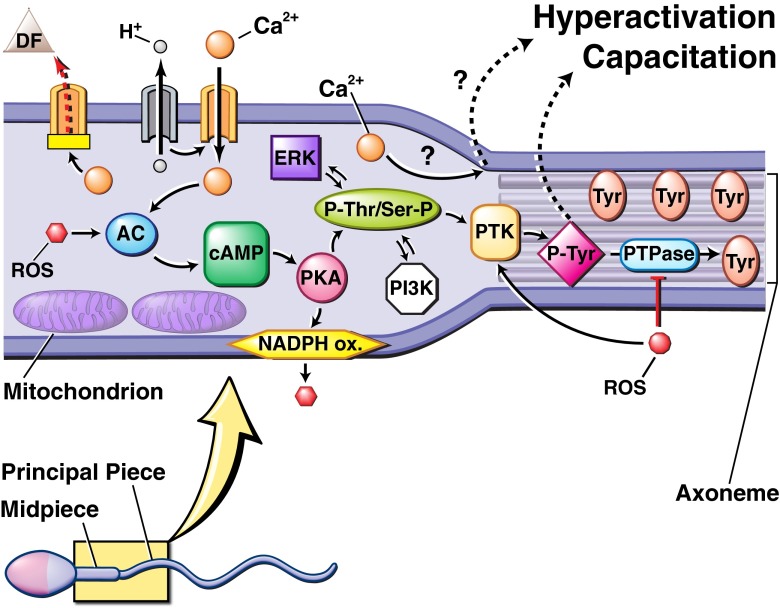Fig. 1.
Biochemical pathway proposed to regulate sperm capacitation and hyperactivation. The process is initiated by an influx of Ca2+ and HCO3 −, possibly caused by the inactivation of an ATP-dependent Ca2+ regulatory channel (PMCA) and alkalization of the cytosol. Both Ca2+ and reactive oxygen species (ROS), specifically O2 −, activate adenylate cyclase (AC), which produces cyclic adenosine monophosphate (cAMP). cAMP activates downstream protein kinase A (PKA). PKA triggers a membrane bound NADPH oxidase to stimulate greater ROS production. In addition, PKA triggers phosphorylation of serine (Ser) and tyrosine (Tyr) residues that, in addition to other inter-connected pathways, lead to the activation of protein tyrosine kinase (PTK). PTK phosphorylates Tyr residues of the fibrous sheath surrounding the axoneme, the cytoskeletal component of the flagellum. ROS, specifically hydrogen peroxide (H2O2), increases the amount of Tyr phosphorylation by promoting PTK activity and inhibiting phosphotyrosine phosphatase (PTPase) activity, which normally de-phosphorylates Tyr residues. The enhanced Tyr phosphorylation observed in capacitation is the last known step in the process, but intermediate steps or other (in)direct methods may be involved

